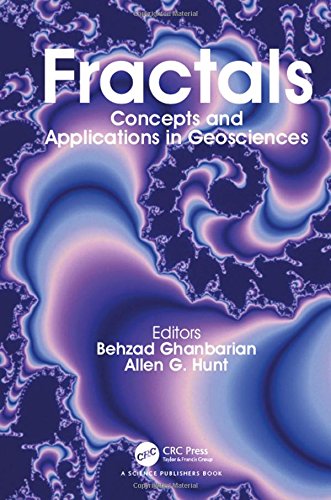

Most ebook files are in PDF format, so you can easily read them using various software such as Foxit Reader or directly on the Google Chrome browser.
Some ebook files are released by publishers in other formats such as .awz, .mobi, .epub, .fb2, etc. You may need to install specific software to read these formats on mobile/PC, such as Calibre.
Please read the tutorial at this link: https://ebookbell.com/faq
We offer FREE conversion to the popular formats you request; however, this may take some time. Therefore, right after payment, please email us, and we will try to provide the service as quickly as possible.
For some exceptional file formats or broken links (if any), please refrain from opening any disputes. Instead, email us first, and we will try to assist within a maximum of 6 hours.
EbookBell Team

4.7
56 reviewsThis book provides theoretical concepts and applications of fractals and multifractals to a broad range of audiences from various scientific communities, such as petroleum, chemical, civil and environmental engineering, atmospheric research, and hydrology. In the first chapter, we introduce fractals and multifractals from physics and math viewpoints. We then discuss theory and practical applications in detail. In what follows, in chapter 2, fragmentation process is modeled using fractals. Fragmentation is the breaking of aggregates into smaller pieces or fragments, a typical phenomenon in nature. In chapter 3, the advantages and disadvantages of two- and three-phase fractal models are discussed in detail. These two kinds of approach have been widely applied in the literature to model different characteristics of natural phenomena. In chapter 4, two- and three-phase fractal techniques are used to develop capillary pressure curve models, which characterize pore-size distribution of porous media. Percolation theory provides a theoretical framework to model flow and transport in disordered networks and systems. Therefore, following chapter 4, in chapter 5 the fractal basis of percolation theory and its applications in surface and subsurface hydrology are discussed. In chapter 6, fracture networks are shown to be modeled using fractal approaches. Chapter 7 provides different applications of fractals and multifractals to petrophysics and relevant area in petroleum engineering. In chapter 8, we introduce the practical advantages of fractals and multifractals in geostatistics at large scales, which have broad applications in stochastic hydrology and hydrogeology. Multifractals have been also widely applied to model atmospheric characteristics, such as precipitation, temperature, and cloud shape. In chapter 9, these kinds of properties are addressed using multifractals. At watershed scales, river networks have been shown to follow fractal behavior. Therefore, the applications of fractals are addressed in chapter 10. Time series analysis has been under investigations for several decades in physics, hydrology, atmospheric research, civil engineering, and water resources. In chapter 11, we therefore, provide fractal, multifractal, multifractal detrended fluctuation analyses, which can be used to study temporal characterization of a phenomenon, such as flow discharge at a specific location of a river. Chapter 12 addresses signals and again time series using a novel fractal Fourier analysis. In chapter 13, we discuss constructal theory, which has a perspective opposite to fractal theories, and is based on optimizationof diffusive exchange. In the case of river drainages, for example, the constructal approach begins at the divide and generates headwater streams first, rather than starting from the fundamental drainage pattern.